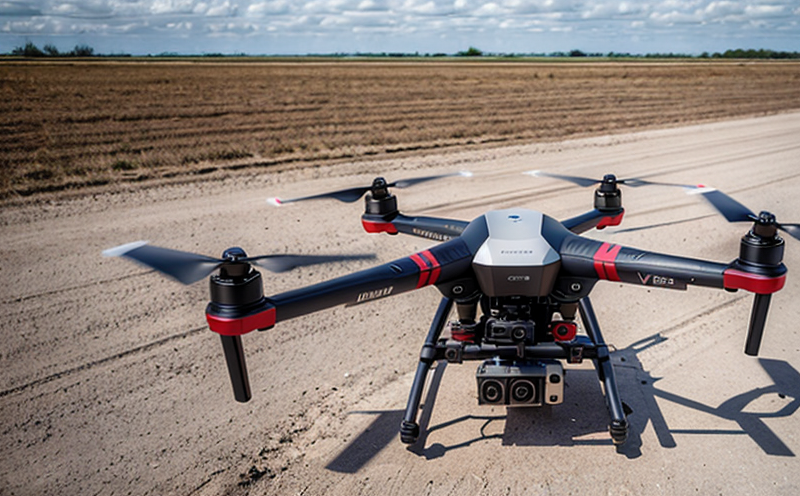RTCA DO-362 Detect and Avoid (DAA) UAV Systems Testing
The RTCA/DO-362 standard is a critical reference for developers of Unmanned Aerial Vehicle (UAV) systems that are intended to operate in the National Airspace System alongside manned aircraft. This standard mandates specific performance criteria for detect and avoid (DAA) capabilities, which ensure UAVs can autonomously identify potential conflicts with other aircraft and take appropriate actions to mitigate risks. The DAA system must be capable of detecting threats at a safe distance from the UAV's flight path and then guiding the UAV away from these dangers.
The testing process for RTCA DO-362 compliance is rigorous, involving multiple phases that simulate real-world scenarios where UAVs might encounter various types of aircraft. This includes fixed-wing planes, helicopters, and other drones. The goal is to ensure that when a conflict is detected, the UAV can execute safe maneuvers to avoid collision without compromising its mission objectives.
Our laboratory employs advanced simulation technologies such as high-fidelity flight simulators and radar systems to replicate these complex environments accurately. These tools allow us to subject UAVs to a variety of test conditions, including but not limited to:
- Varying altitudes
- Different speeds and headings
- Approaching aircraft at various angles
- Obstacle avoidance scenarios
- Communication link performance under different signal-to-noise ratios
The testing process begins with a thorough examination of the UAV's hardware and software components to ensure they meet the standards set forth in RTCA DO-362. This includes checking for reliable communication systems, robust sensors capable of detecting threats early enough to implement avoidance actions safely, and fail-safe mechanisms that activate if the primary system fails.
Once the initial inspection is complete, we proceed with functional testing using a suite of instruments designed specifically for aerospace and aviation applications. These tests evaluate whether the UAV can:
- Detect threats at safe distances
- Calculate appropriate evasion maneuvers
- Execute these maneuvers accurately and efficiently
- Communicate effectively with other air traffic systems
- Ensure that the avoidance actions do not jeopardize the safety of the UAV or surrounding airspace users
The success of RTCA DO-362 compliance testing is measured against several key performance indicators (KPIs). These include:
- Threat detection range accuracy
- Evasion maneuver effectiveness
- System response time under different conditions
- Communication reliability during critical moments
- Airframe stability and control during evasive actions
Our team of expert engineers and technicians has extensive experience in conducting these tests, ensuring that every UAV passes through a comprehensive evaluation process. By adhering strictly to international standards like RTCA/DO-362, we guarantee the highest level of safety for all users of the National Airspace System.
| Test Parameter | Description |
|---|---|
| Threat Detection Range Accuracy | The distance at which a UAV can reliably detect potential threats and initiate avoidance maneuvers. This parameter is crucial for ensuring early detection of hazards. |
| Evasion Maneuver Effectiveness | The ability of the UAV to execute precise and effective evasion maneuvers, minimizing risk during a conflict situation. |
| System Response Time Under Different Conditions | The time it takes for the UAV's DAA system to detect a threat and respond with an appropriate maneuver. This includes variations in altitude, speed, and weather conditions. |
| Communication Reliability During Critical Moments | The stability and accuracy of communication between the UAV and other air traffic systems during critical evasion maneuvers. Ensuring clear communication is essential for coordinating safe flight paths. |
| Airframe Stability and Control During Evasive Actions | The ability of the UAV to maintain stability and control while executing complex evasion maneuvers, ensuring that the aircraft remains safe throughout the process. |
By focusing on these critical parameters, our laboratory ensures that UAVs meet the stringent requirements set by RTCA DO-362. This not only enhances public safety but also allows operators to confidently integrate drones into various sectors such as agriculture, delivery services, and emergency response.





